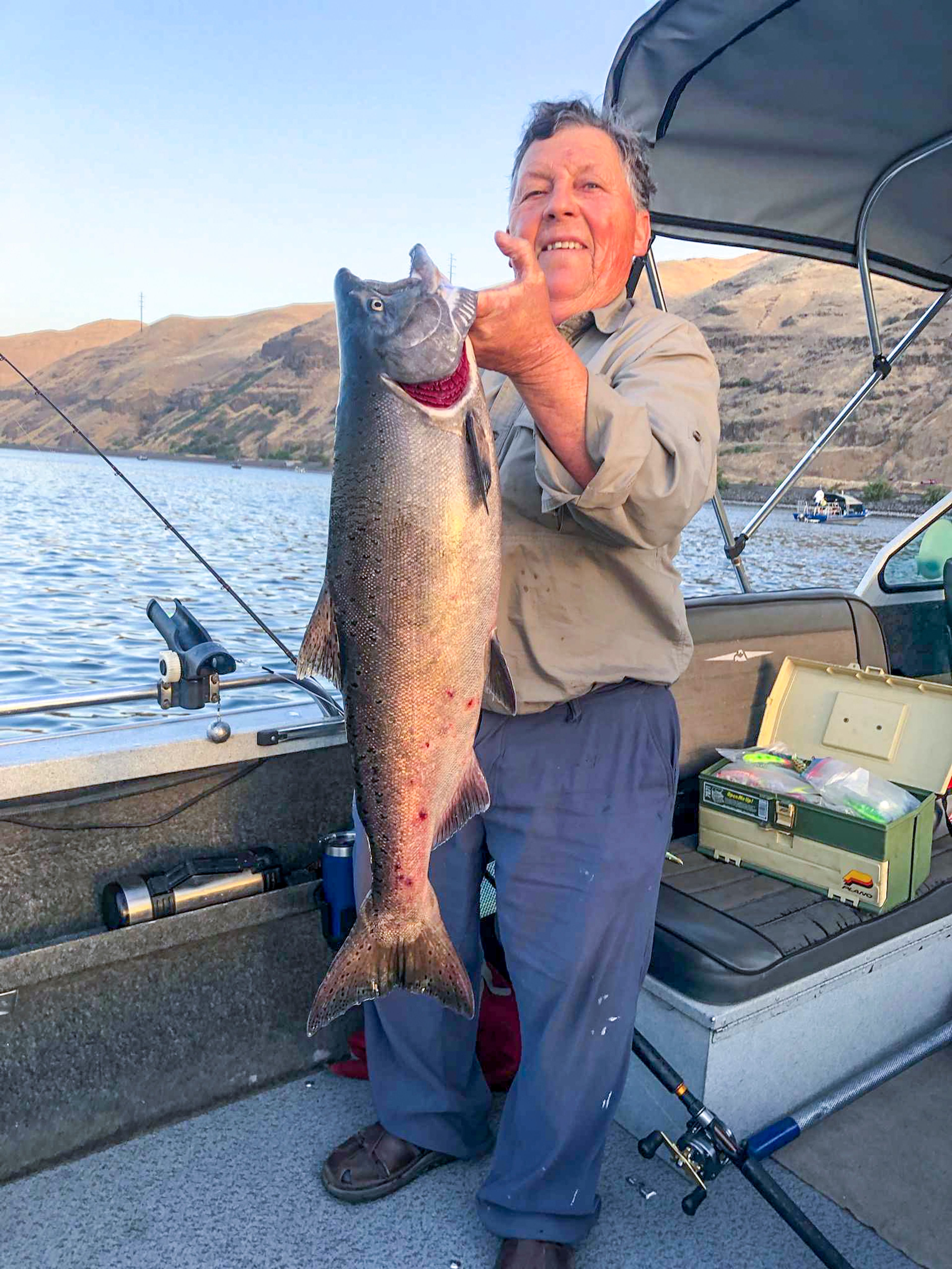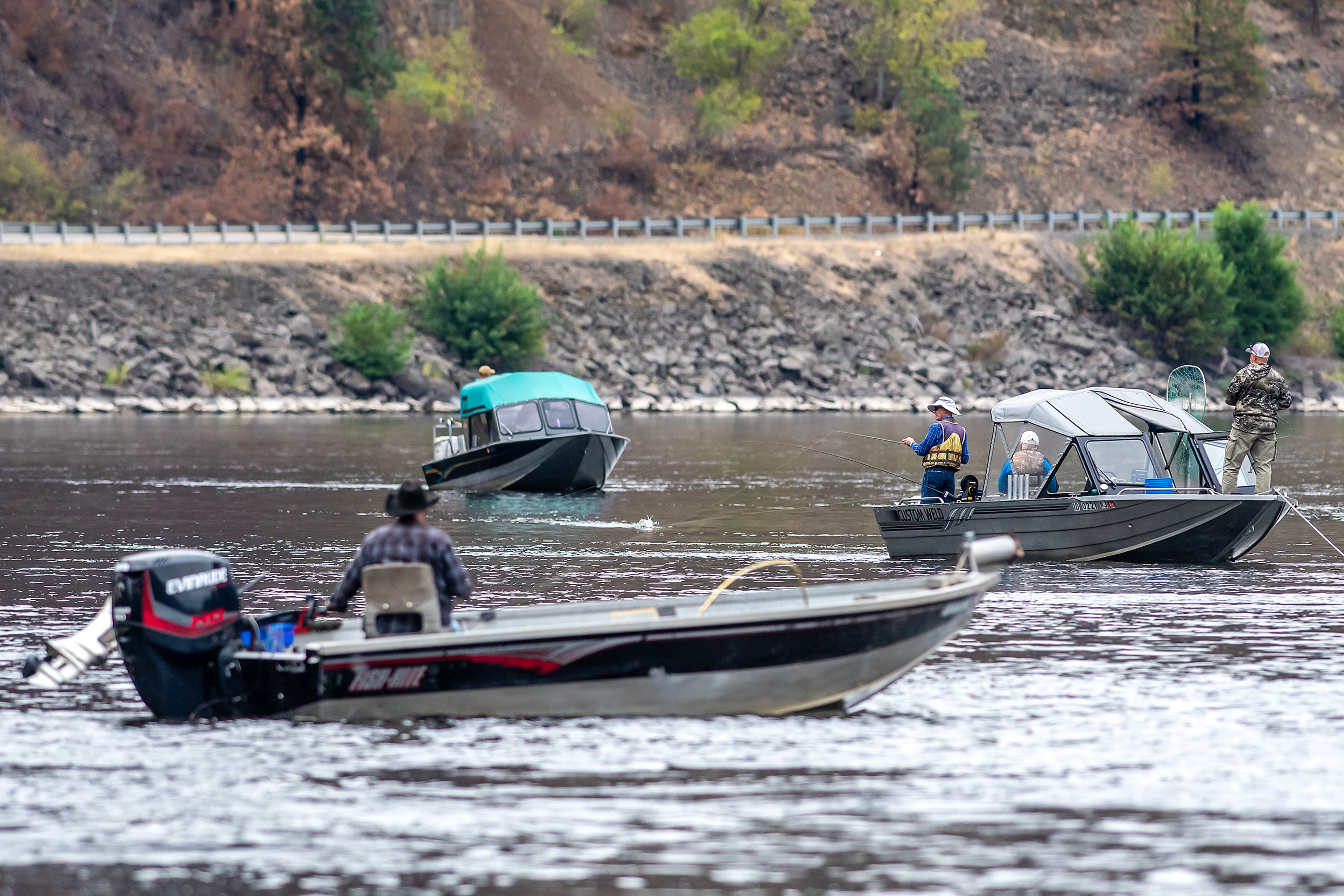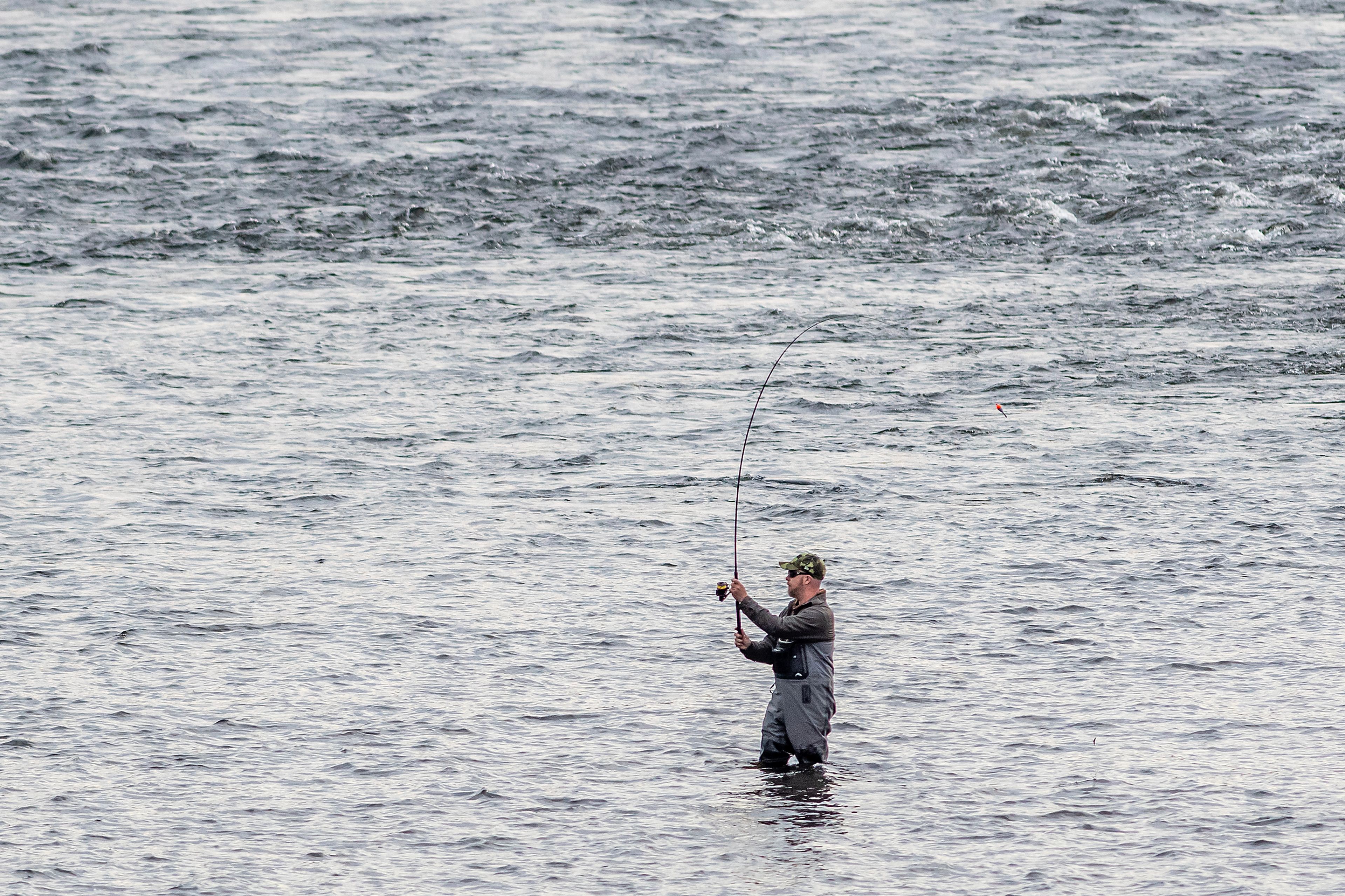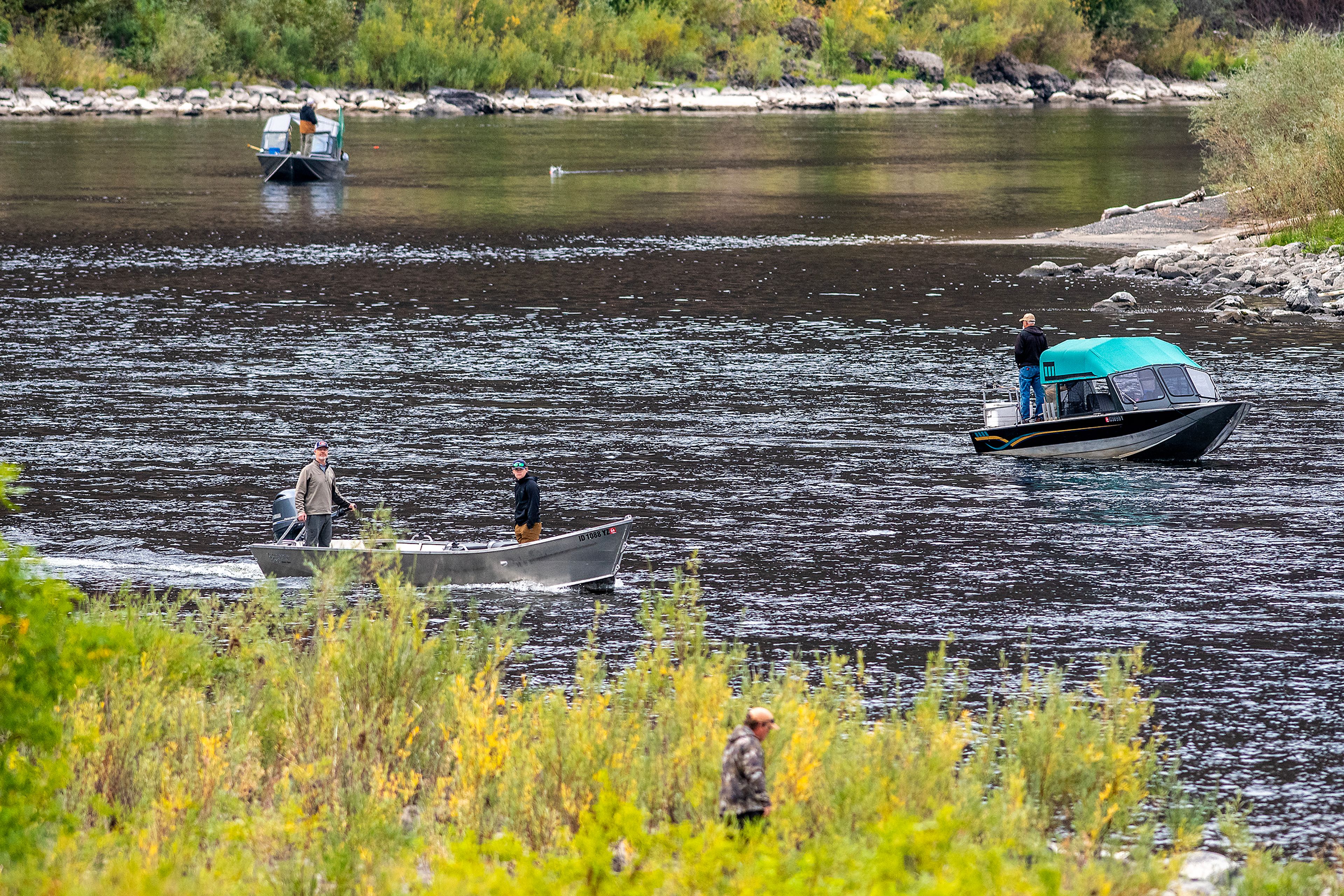Fall fishing: It's no longer just about steelhead
Successful hatchery programs have diversified the fishery with fall chinook and coho
Not too many years ago, fall fishing in the Snake, Clearwater and Salmon rivers centered almost exclusively on steelhead.
But those days are gone. Successful hatchery programs led by the Nez Perce Tribe have diversified the fishery. Fall chinook and coho now divide the attention of anglers. While neither fishery is brand new, some anglers are still learning how to target kings and silvers.
The Tribune gathered some tips from expert anglers.
Fall chinook
The most established fishery for Snake River fall chinook is centered in the confluence of the Snake and Clearwater rivers.
The fish keg up here, likely catching a breather on their way to spawning grounds and taking advantage of the cooler temperatures provided by the Clearwater River.
The season there opens Aug. 18 and has developed into an angling event.
“Opening day, it’s like a frenzy,” said Richard Scully, of Lewiston. “There is like 60 to 80 salmon caught there within a couple of hours, then it slows down but people still catch fish.”
The confluence fishery is largely over now for fall chinook. Yes, fall kings continue to stream over Lower Granite Dam, some 25 miles to the west. But many of the fish parked in the confluence have moved on.
If you want to give it a shot or file away some advice for next year, this is how anglers fish the confluence.
While a few anglers cast bobber and jigs from the northwest bank, this is largely a boat fishery and most people troll for them, using plugs behind flashers. Scully noted it’s the predominant technique used from Buoy 10 at the mouth of the Columbia River all the way to the Lewiston-Clarkston Valley.
He recommends a heavy sinker — 10 to 16 ounces — on a slider above a barrel swivel. From there, run a 2-foot bumper — 50-pound test line — to an 11-inch chrome flasher and 3 feet of leader to a plug — usually a Brad’s Super Bait or Yakima SpinFish loaded with tuna and sea salt or other attractant.
“The further you get from the ocean, the more salt seems to be attractive to them,” he said. “Some other ingredients are krill powder and sodium sulfite — for some reason fish like that.”
Troll at slow speeds, just fast enough that the flasher makes a complete revolution, marked by a rod tip bob, every second or so. Scully trolls at about 1.3 miles per hour when headed upstream and 2.2 mph when going downstream.
Instead of a sinker, some anglers use downriggers. Scully recommends trolling in 20 to 30 feet of water near the confluence and deeper downstream in the section of river between Red Wolf Crossing Bridge and the confluence.
“If there is going to be a good bite it’s usually in the first two hours of daylight,” he said.
Not the only way
Trolling is the dominant technique but a minority of anglers are drifting salmon eggs, also called hover fishing, or bobber fishing with eggs.
“The salmon in our rivers just love eggs,” said Toby Wyatt, owner of Clarkston-based Reel Time Fishing. “Once they get up river, they just love roe.”
Free flowing
Chinook are increasingly moving into free-flowing sections of the Snake and Clearwater rivers and bound for the Salmon River. On the Clearwater, Wyatt targets them in deeper holes.
“Anywhere you can find 20 feet of water or more.”
Bank anglers often use bobbers with eggs and those fishing from boats can use divers to get their bait as deep as possible.
“Get as close as you can to the bottom,” Wyatt said.
The fall chinook fishery is gaining a fan base on the Salmon River. In 2018, the Nez Perce Tribe, which has led the reintroduction of fall chinook to the Snake River and its tributaries upstream of Lower Granite Dam, shifted where it releases juvenile fish. The tribe, working with federal fisheries officials, ceased fall chinook releases below Hells Canyon Dam and moved that program to the lower Salmon River. The idea is to monitor how successful fall chinook are downstream of Hells Canyon Dam without the annual influence of hatchery fish.
The Riggins area has benefitted with a fishery that falls into a slot that was otherwise slow.
“It is slowly growing. It has helped our bookings tremendously,” said Roy Akins, owner and operator of Rapid River Outfitters. “The last week of September, I’m booked with day trips.”
Akins said people fishing for fall salmon in the Salmon River often pull Kwik Fish or use plugs popular on the Columbia River. But he sticks with techniques that are more associated with steelhead.
“To be honest, I feel like we have every bit of success,” he said. “It’s hard to beat little mini Hotshots.”
He targets the sort of water he would expect to find steelhead during the winter — deep pools with a slow current. If you see fall chinook porpoising and rolling, “put your plugs in the water and I would say 70% of the time you are going to get a hit.”
By the time the fish reach the lower Salmon, they are starting to think about spawning. Akins said they will segregate themselves into a handful of pools.
“When you sit in a boat at sunrise, those fish will be rolling. It gives you an idea of what Lewis and Clark witnessed. You will have thousands of fish. You can’t help but just boil with excitement when you see that kind of activity with big fish. It’s like ‘Oh my gosh, this is what it’s supposed to be like, this is why they call it the Salmon River.’ ”
How do they cut?
Fall chinook are big bruisers. They can weigh 20 pounds or more. But they migrate upstream during pretty adverse conditions when water temperatures are in the high 60s to mid 70s. They are also in a hurry and, unlike spring chinook and steelhead, they spawn relatively soon after hitting freshwater.
All of that can cause their table fare to suffer.
“No matter how pretty they are, they are nothing like a spring chinook,” Scully said.
But don’t sleep on them. There are plenty that retain meat quality into October.
“Up until about the 9th (of October), everything you catch is pretty bright,” Akins said.
Silvers
It’s prime time for coho fishing in the Clearwater River and, to a lesser extent, the Snake. The fish are passing Lower Granite Dam in big numbers and progressing upstream.
Popular techniques include casting spinners and spoons in places they congregate. On the Clearwater, people often fish for them at Spalding near the mouth of Lapwai Creek or near the Kooskia Hatchery at Clear Creek — the two primary places the fish are bound for. Another popular spot is near the Clearwater Paper Mill.
“I think casting Brad’s Wigglers, Fire Tiger color, I think that is the best,” Wyatt said.
Barker may be contacted at ebarker@lmtribune.com or at (208) 848-2273.












